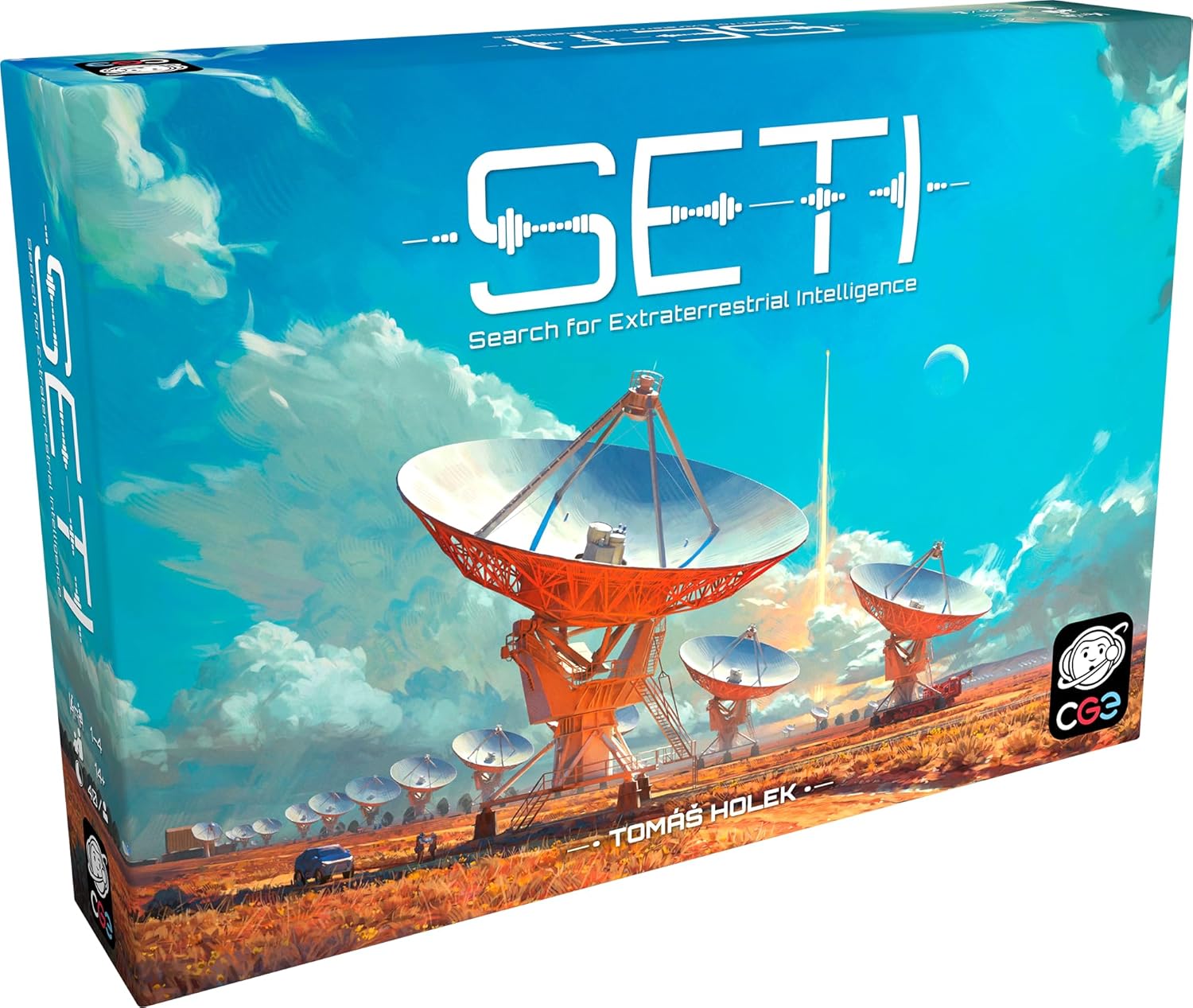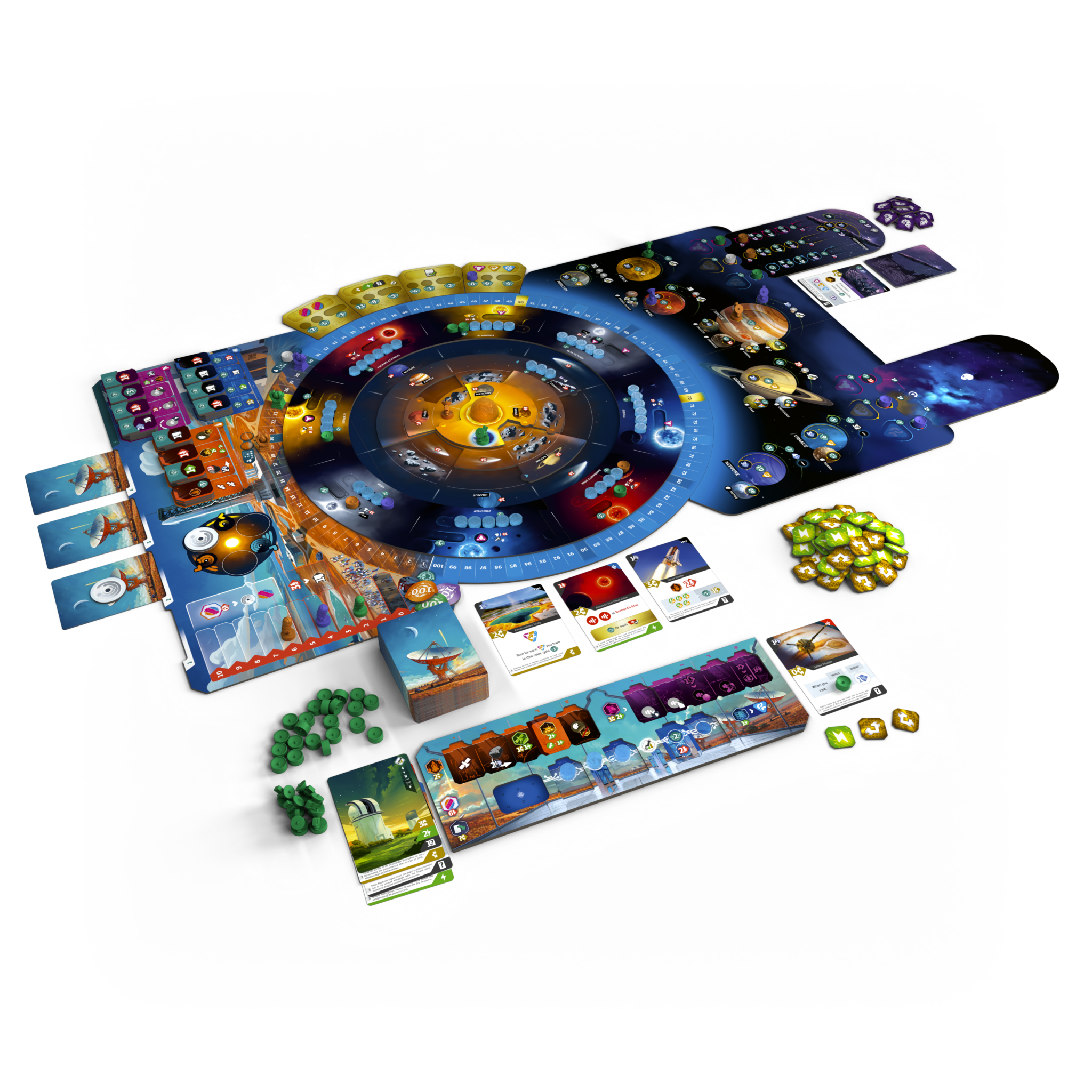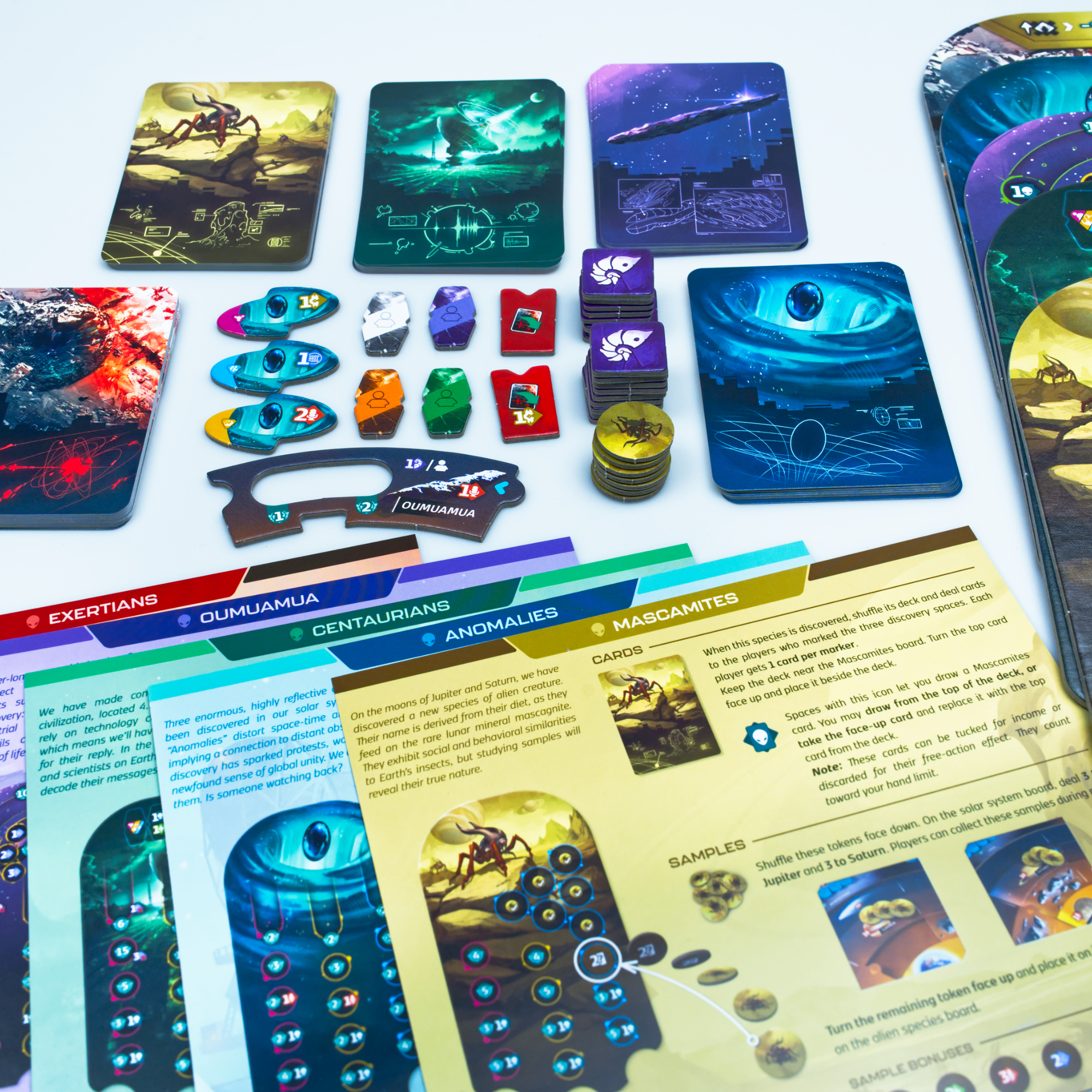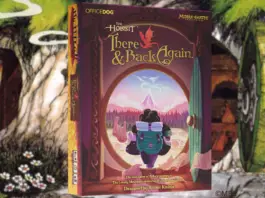I’ve been, ahem, traking SETI from CGE for a while, especially after I got a close look at it at last year’s Gen Con. The ambitious theme, ties to real-world science (it was developed with the direct help of the real life SETI), and incredibly impressive production value all made it something that stood out even as someone who is a hard sell on Euro-style games. Once I got my copy to review, I discovered it to be a little heavier and little more dense than I first expected. But once I learned its little quirks, read the walls of text, and got a handle on the rules I found something that really awakened the little science nerd we all have inside of us.
What’s In The Box?

- Solar system board
- 4 sector & player boards
- 5 alien species
- 48 tech tiles
- 4 gold tiles
- 60 credit/energy tokens
- 33 alien tokens
- 24 solo tiles
- 138 project cards
- 4 income cards
- 55 alien cards
- 19 solo cards
- 32 probes
- 120 player markers
- 4 publicity counters
- 4 score counters
- 1 Sun
- 70 data

You can tell that when CGE went about designing SETI they had to balance a few things. Educational games like SETI often fall victim to being TOO “true to life” and end up looking like something out of a high school science textbook. But if you go too far on the cartoony, sci-fi vibe (which CGE does very well, I might add) then it undercuts the very serious work that the real-world organization is doing. But I think that (frankly, huge) team of artists that worked on SETI did a fantastic job of keeping things colorful and interesting without losing balance. There’s a subtle impressionism to the way it all looks, like someone painting still lifes of advanced scientific equipment. The board is beautifully made and pops in all the right places with plenty of spots for your resources and a wealth of information that’s easy to read. Oh, and it rotates. Yeah it’s a bit finnicky to set up but the middle solar system is meant to move after every turn, changing the layout of the board and what options work best for players.
How’s It Play?

Players in SETI are, as the name suggests, searching for evidence of intelligent life. To do this, you’ll need to send out probes to study things first hand while researching new tech and beefing up your terrestrial telescopes back home. As a middle-weight euro you’ll spend most of your time gathering and managing your limited assets to devote to your strategies, and building up to decisive action is a key element.
Each game of SETI only takes place across five rounds, and on each player’s turn they only take ONE action: Launch A Probe (which is your first step into the solar system and is the core of your info gathering), Orbit A Planet (turn your probe into an orbiter and gather broad survey info), Land on a Planet or Moon (convert your probe into a lander to gather specific data), Analyze Data (a key component to discovering actual life), Play a Card (play one of the 200 cards to get new tech and benefits), Research a Tech (upgrade your capabilities), or Pass. As the game goes on, the choices you make enhance your ability to send out probes, scan stars, and synthesize data. Moving your different parts around and gaining free actions is a key component. You’ve also got to manage your publicity because, just like in real life, you have to get people interested in your research if you want to stay funded and expand your facilities. The cooler the discoveries, the more you can do.

The neat thing about SETI is that you actually CAN discover alien species. Based on real concepts of what an extraterrestrial might look like, they’re not cartoony or even recognizable as anything we’ve seen before. But thanks to the data you collect, the discoveries your probe makes, and the scanning of stars you CAN piece together info to learn about one of two species per game, with the different species changing each time. You don’t have to find them to do well or even win thanks to the game’s emphasis on the search for life as much as the discovery of it. But it does feel great to actually piece it all together and find aliens.
The Verdict?

If you’re looking for a big sci-fi adventure with crazy aliens and far-out tech, you hopefully can take a hint and not grab SETI. But I don’t want you to think this is something aimed only at science teachers and Contact fans. SETI is a solid and interesting experience brimming with cool ideas. It sets out to not so much teach you about space but to instead teach you about discovery. Every choice and little improvement you make lets you search for more and WANT to discover new things. It’s value in an educational tool is in that. And while the size of the board and the huge number of (literally) moving parts can be a little hard to get through at first, and in fact might take a couple games to really understand fully, all of it fits together seamlessly and makes for one of the more unique spins on the Euro-style I’ve played in a while.
You can grab SETI from CGE, Amazon, or your FLGS at an MSRP of $89.95.
Images via and review copy via CGE and 20th Century Fox
Have strong thoughts about this piece you need to share? Or maybe there’s something else on your mind you’re wanting to talk about with fellow Fandomentals? Head on over to our Community server to join in the conversation!




